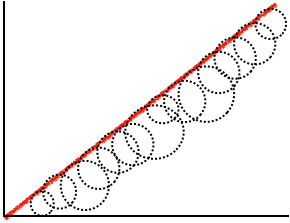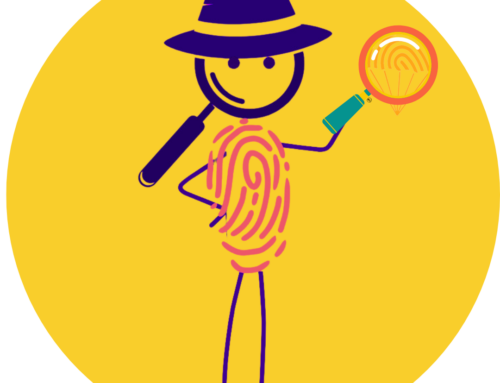As ever-adventurous neighborhood travelers, my daughter and I attempted a new shortcut to her friend’s house this weekend. We also like to sing a little in the car, and we anticipated our accomplishment with a melodious mix of Pentatonix’s “White Winter Hymnal” and our voices filling the interior.
Then we missed a right turn. Whoops! (The needle screeches across the record.)
As we continued along the windy loop of a road that took us around our destination rather than to it, I thought, “Hmmm, this doesn’t look like we’re headed the right way.” But the fall leaves and neighborhood topography offered a peaceful backdrop on our wayward route, and I kept in mind we were within a mile of our endpoint. (Self-talk: this is a weekend. You’re not working toward any deadlines here.)
Eventually, the loop took us back to where we started. “Carynne,” I said to my seven-year-old, “We’re back where we began. What do you think? Should we try again?”
After momentarily pausing Moana’s “Where You Are,” she answered confidently from the back seat, “Yes, we can do it. Let’s go to A’s house. I know the way to K&N’s from there.”
So we did. Shortcut: Take Two. Cue The Greatest Showman’s “This is Me.”
Because we had a vision of where we wanted to go and had learned from our past error, we successfully navigated the second time as we met familiar landmarks along the way. “Turn right, Mom,” my co-pilot directed. “Now left.” We dynamic duo-ed our way through the falling leaves with a clear path showing the next steps to our destination.
In the special moment of this accomplishment with my youngest, I was reminded of a connection to psychologist C.R. Snyder’s definition of hope as we reference it in our Yellow Parachute Learning Coach Training Handbook. Snyder defines hope as “a trilogy of goals, pathways, and agency.”
Hope happens when:
| C.R. Snyder | Team Thorpe |
|
Carynne and I paused to take stock. We realized where we were and where we wanted to go. |
|
Carynne and I envisioned how to get to her friend’s house, persisted when our path led us astray, and tried again. |
|
Carynne and I believed we could figure out the shortcut. (You may recall a story about a Little Engine That Could…) |
Knowing Where You Are
When you’re lost and call for directions, the person who hears your call will ask, “Where are you?” This question will orient them so they can direct your next steps to your destination—to help. This is the first step that our Learning Coaches take with students: finding out where they are. Carynne and I paused to take this step after we realized we’d gone astray on our route. The pause gave us time to evaluate where we were (quite literally) in relation to where we wanted to go.
Knowing Where You Want to Go
“A sailor without a destination cannot hope for a favorable wind.” —Leon Tec
Life travels at a furious pace. Sometimes it feels as though we’re simply water rushing downstream. But if we press “pause” for a minute, we can notice and examine the micro-decisions we make constantly. Each decision is an opportunity to approach—or retreat from—where we really want to be.
Because we had a picture of where we wanted to go, Carynne and I could put the steps into place to get there. This concept is key in any goal-setting exercise, at any age, in any setting, and across all disciplines. And recording milestones is a way to document progress along the way.
Knowing where they want to go is especially crucial for students with ADHD symptoms that disconnect them from past and future events. Without documentation of the process, these students miss out on valuable learning and opportunities to try again. Projecting oneself forward—living the goal achieved—makes the connection stronger.
Believing You Can Get There—Trust the Loop
There’s a reason a dog’s leash has a loop on the end instead of a straight strip of material. If your furry friend has ever taken off in pursuit of a squirrel, wild turkey, or passing bicyclist, you’ve found that loop to be ever-so-handy. Am I right? You can hold on. Trust the loop.
Like the loop of a road that Carynne and I encountered on our weekend adventure, wrong turns bring us back to familiar territory. If we can hold onto this familiar ground, we can regroup and start again.
Snyder and Brené Brown both suggest that “hope is learned.” I agree, but I want to offer you a stronger claim: “Hope is practiced.”
When we can show kids how to practice hope, we can make concrete essential learning concepts—like “try again,” “growth mindset,” “perseverance,” or “grit.” These ideas often feel too abstract and can get lost in the daily shuffle and fall on our kids’ ears like Charlie Brown’s teacher’s voice: “Wah wa-wah wa-wah wa-wah.”
My weekend experience with Carynne provides evidence that we can practice hope together in our everyday lives. Identifying real-life examples transforms hope from a pie-in-the-sky emotion into a lived-out reality, a muscle that can be exercised, and a feedback loop that can be integrated into our daily routines. These are the routines and behaviors that build resilience into our kids lives from childhood into adulthood, so they can use their gifts and passions to change the world.
Yours in HOPE,
Cara

A Learning Line with Loops!







